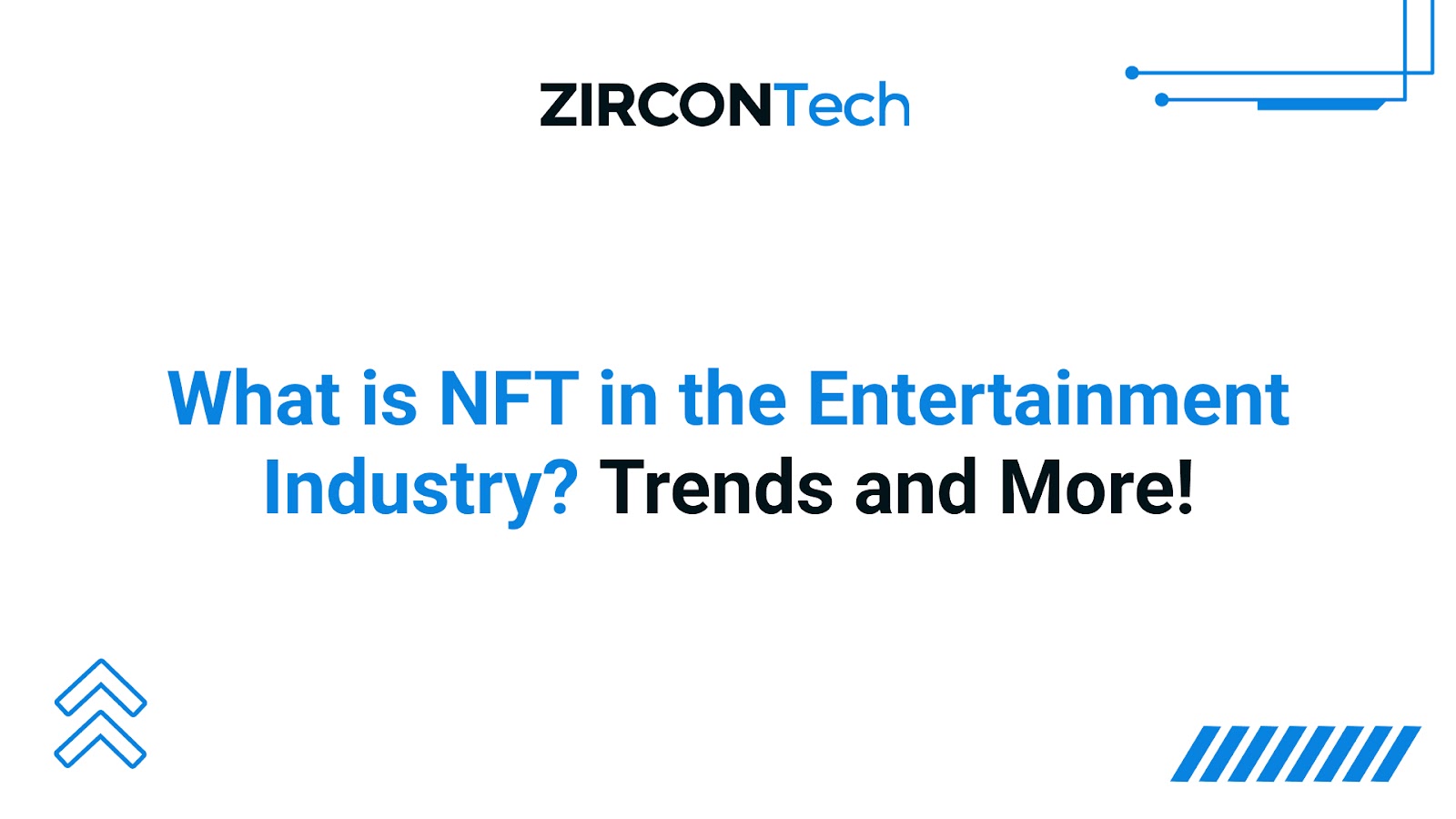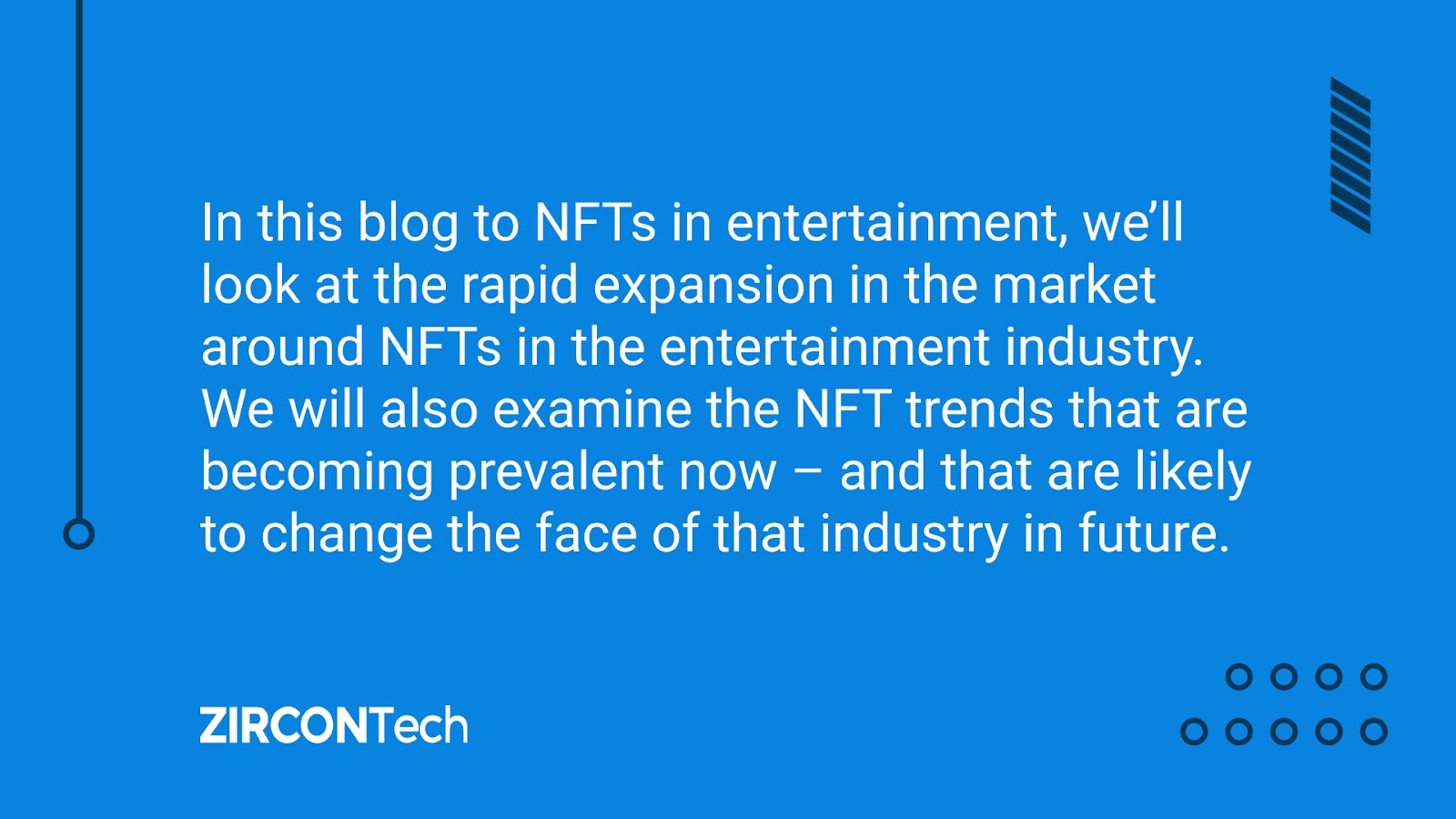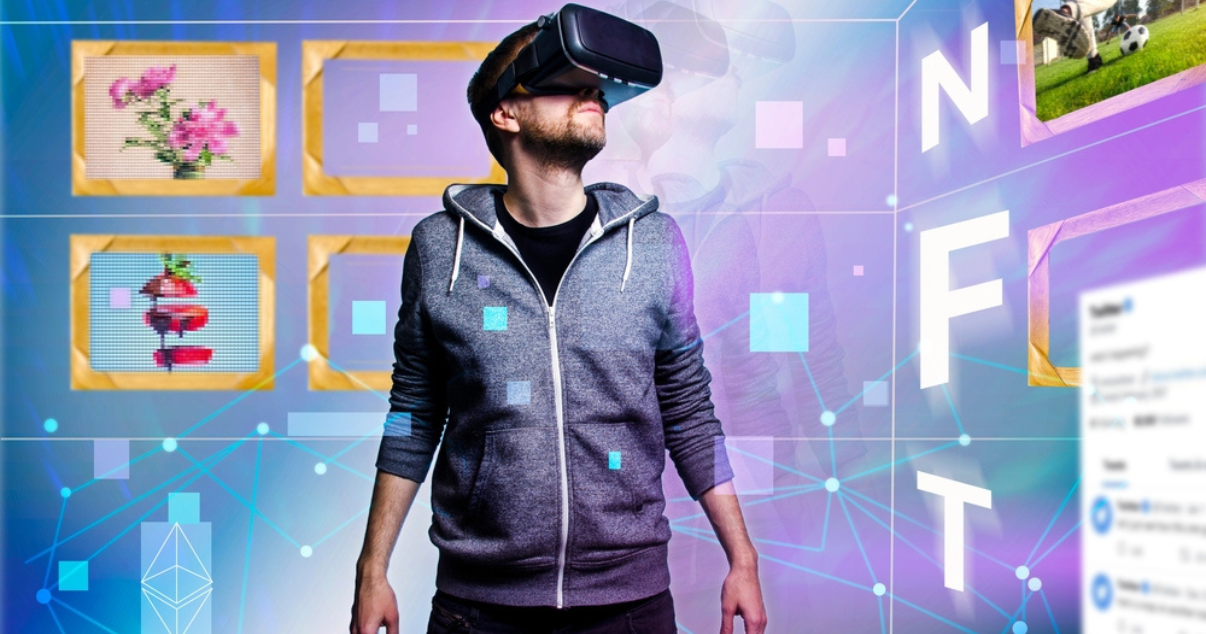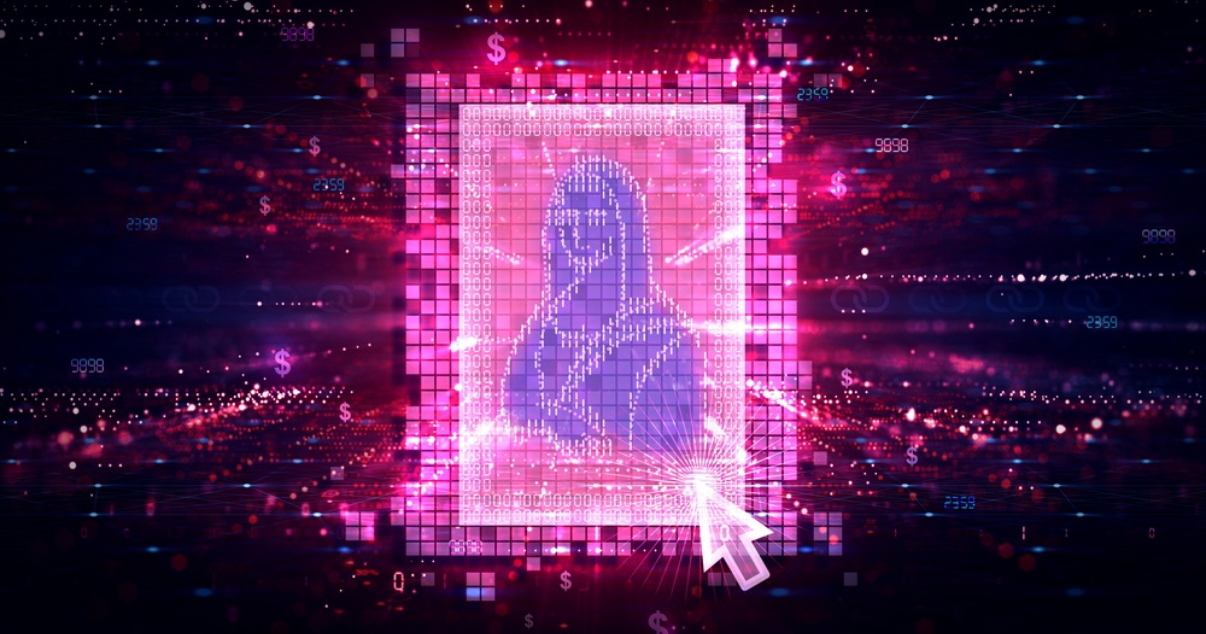
NFT in the Entertainment Industry
Non-Fungible Tokens (NFTs) have made a spectacular entrance onto the digital scene in recent years. There is increasing fascination around NFTs, what they can be used for – and what might happen around them in the years to come.
When NFTs first began to be an accepted form of digital property, most of them related to games and pieces of art. It was only a matter of time before they evolved to move into the entertainment industry.
That process is now well under way. There are now numerous examples of NFTs in the entertainment industry. Increasingly innovative methods are being found to unlock the potential – and the advantages – of trading in NFTs.

ZirconTech is perfectly positioned to offer consultancy services relating to NFTs in the entertainment industry. As an experienced and trusted software development partner, we are able to react in an agile fashion to emerging trends and to ensure the clients to whom we deliver our services are equipped to benefit.
Let’s begin, though, by reminding ourselves what NFTs are – and how their unique properties mean they lend themselves perfectly to the development of NFTs in entertainment.
NFT’s are digital assets that represent real-world objects. This could be photos, videos or pieces of audio. Their value lies in their uniqueness, which is guaranteed by a unique identifying code.
Each token is encrypted to the blockchain; it cannot be changed, and every transaction is recorded and can be checked thanks to the transparency of the blockchain. If you are new to the concept of NFTs, think of them in the same way as a collectible, like a trading card – but with the value enshrined digitally.
As you can imagine, these properties make NFTs in the entertainment industry an obvious next step for digital developers, and for people with valuable properties to sell in that industry.
NFTs in Entertainment

Some examples of the way people are using NFTs in the entertainment industry are as follows:
- Fox Entertainment released 10,000 Miss Masky NFTs to coincide with its popular TV show The Masked Singer. The intention was to persuade fans of the show to invest in one of the masks – and to buy and trade other NFTs relating to the show.
- Warner Brothers created 100,000 NFTs inspired by the recent movie Matrix Resurrections – and they sold out.
- OneOf, an NFT entertainment platform backed by record producer Quincy Jones, auctioned an NFT of a previously unheard demo of a Whitney Houston song for $1million. This is an exceptional example of the potential for NFTs in entertainment; a rare piece by a legendary singer carries enormous appeal and, therefore, will fetch an extremely high price when it goes on sale.
- ViacomCBS announced plans to move into the NFT entertainment space with tokens related to South Park, Star Trek, and even Spongebob Squarepants.

Arguably the most compelling example of a leading celebrity embracing the potential of NFTs in entertainment is Mila Kunis, who invested in the NFT animated series The Gimmicks through Sixth Wall, her blockchain entertainment company. Holders of Gimmicks NFTs can vote on the direction of the show’s storyline, for instance.
There are many companies within the entertainment industry that are pushing forward at full speed to jump on the NFT bandwagon.
Fox moved into the space with its Blockchain Creative Labs NFT studio. It also announced the availability of a $100million creators’ fund for NFTs.
Perhaps the most compelling illustration of the impact of NFTs in the entertainment industry is the way in which several recent releases at the cinema have incorporated them into their production and presentation – with strong responses from crypto-aware movie fans.
- Zero Contact was the first Hollywood feature to be released as an NFT. It came out on Vuele, the first direct-to-customer full-length film distribution and viewing NFT platform. Viewers could access a choice of NFT bundles. The response was hugely successful, and suggests this could be a route followed by many studios in the months and years to come.
- Dune won six Oscars – and its production company Warner Brothers issued two sets of digital collectibles related to the film. One contained digital sculptures of the cast, the other included more artifacts from the Dune world.
- In The Mood For Love came out as long ago as 2000 but its director, Wong Kar Wai, later turned part of his creation into an NFT – specifically, a 90-second scene that did not make it into the original. The footage sold for more than $500,000.
- 83 is a Bollywood sports movie that was released along with a batch of exclusive digital collectibles – 83 of them, to be precise. The film told the story of India’s first triumph in the cricket World Cup, and given the enormous popularity of the sport in India, it was no surprise that the NFTs were very much in demand.
- Barrack O’Karma 1968 was a follow-up to the hit cult TV show Barrack O’Karma. TVB, the Hong Kong company that created the show, came up with 1,000 NFTs related to LanBo, the most popular non-human character in the program.
These examples demonstrate vividly how commercially profitable NFTs can be – which gives NFTs in the entertainment industry a huge appeal, given the necessity for any production to make more than its budget.
One area in which NFTs have already become massively popular is the world of sports collectibles. However, potential investors should be aware of possible scams in sports NFTs, as ZirconTech CEO Andres Zunino warned in a recent article for Forbes magazine.
The impact of NFTs in the entertainment industry

One fascinating aspect of NFTs in the entertainment industry is the different speeds at which tokens have been adopted as useful instruments by various parts of that industry.
Gaming was probably the first sector of the entertainment industry to embrace the full potential of NFTs. NFTs are at the heart of play-to-earn games, in which players can earn rewards for taking part and excelling. Those rewards can often be in the form of NFTs.
Music is another area that has been relatively quick on the uptake. The example of the Whitney Houston NFT cited above is a vivid illustration of the value that can be placed on a particular piece of art, and increasing numbers of artists and producers are becoming aware of the extra commercial value they can drive by enabling fans to invest in NFTs.
Artists in all parts of the entertainment industry are waking up to this potential new income stream. They can create unique experiences for their devoted fans in the form of NFTs, which in turn can add to the value of a particular piece of music or video. One side-effect of this is that relatively obscure artists can make their niche lucrative by targeting their particular audience and making money without having to be a big hit on the mass market.
NFT trends in the entertainment industry
All this leads us to a consideration of the trends – present and future – that are reshaping large parts of the entertainment industry. The main NFT trends we expect to see growing over the next few years are as follows:
Diversified funding models
It would be wrong to categorize the entertainment industry as being all about money. Plenty of dedicated creators still believe in the old adage about art for art’s sake. However, this is an area of business where, like any other, making a profit on your work is important.
The rise of NFTs in the entertainment industry offers hope that there might be new ways of raising funding for a film, play, TV show, book or album. Film-makers, for instance, could distribute ownership of a proposed movie via NFTs, which would then enable the film to be made.
In return, those who invested in the NFTs could find themselves credited as associate producers on the project. The decreased distance from creator to fan is a trend we will return to momentarily, but there is clearly a key financial aspect to this altered relationship.
This type of funding model could be particularly tempting to smaller studios. Independent film-makers are always on the lookout for new income streams, and the possibility of being able to sell unique digital properties to a small but loyal audience means customer-powered funding models could make the difference between a film being made and remaining at the concept stage.
A sense of community and membership
Traditionally, people who made music or starred in films were a long distance from their adoring public. They are on stage while we are in the cheap seats; they appear on the screen while we queue for access to the cinema. One corollary of the growth of NFTs in entertainment is that that distance will be significantly reduced.
The involvement of NFT owners in the funding process potentially gives those individuals and groups a certain amount of influence in the artistic process. If NFT-owning stakeholders can garner a degree of power, they can help to decide which way the plot of a favorite TV series could move.
Until now, all such decisions have been made by senior studio executives. Now think back to a time when your favorite character was written out of a TV show. If you, through your ownership of an NFT that helped to fund the creation of a program, have some influence over such decisions, you may be able to vote on what storylines and characters appear on screen.
Some independent studios are financing productions through NFTs, as mentioned above. One side-effect is that the owners of those NFTs can have a greater say in the production process. The after-effect of that is a sense of community among the fans of a program or franchise, and an enhanced feeling of involvement in creative decisions.
Enhancement of the fan-driven economy
Many fans of TV shows or hit movies love nothing more than to collect items of memorabilia that have the effect of bringing them closer to the world inhabited by their screen idols.
The ongoing market for Star Wars collectibles is testimony to that, as are the large crowds that flock to fan conventions and who continue to watch films in a franchise that rumbles on for decades.
The advent of NFTs in the entertainment industry holds out the prospect of many new ways of encouraging fans to feel closer to their idols – and, as a result, to spend money on experiences that reduce the distance between them and their favorite stars.
Top studios could create mixed-reality experiences at theme parks, or enable NFT purchasers to attend a virtual red-carpet premiere wherever they are in the world.
So many artifacts from the entertainment world could be turned into NFTs; a five-second video clip from your movie idol, clips from movies, and digital art featuring well-loved characters.
The sense persists that the creative possibilities are so abundant that, when it comes to NFTs in entertainment, it seems certain that we ain’t seen nothing yet.
How can ZirconTech help you?
If you are involved in the creative arts, and are looking to investigate ways in which NFT trends in the entertainment industry could benefit you, ZirconTech is here to offer expert assistance.
We deliver consultancy advice to businesses in a broad range of industries. As an experienced provider of software development services, we are expert in a host of applications when it comes to digital transformation. Speak to us today to find out more.